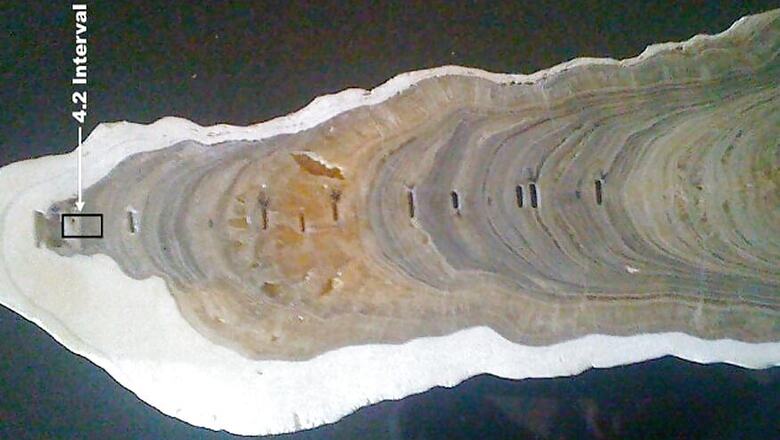
views
London: Scientists have defined a new geological time scale called the ‘Meghalayan Age’ — a period which began 4,200 years ago and experienced an abrupt mega-drought and cooling around the globe.
Sediments collected by an international team of researchers, including those from a stalagmite from a cave in Meghalaya, helped define the smallest climatic event in Earth’s history.
Agricultural-based societies that developed in several regions after the end of the last Ice Age were impacted severely by the 200-year climatic event that resulted in the collapse of civilisations and human migrations in Egypt, Greece, Syria, Palestine, Mesopotamia, the Indus Valley, and the Yangtze River Valley.
Evidence of the 4,200-year climatic event has been found on all seven continents.
The Late Holocene Meghalayan Age was ratified as the most recent unit of the Geologic Time Scale after many years of research. Two other ages: the Middle Holocene Northgrippian Age and the Early Holocene Greenlandian Age with beginnings defined at climatic events that happened about 8,300 years and 11,700 years ago respectively were also approved. The three ages comprise the Holocene Epoch, which represents the time since the end of the last Ice Age.
The Meghalayan Age is unique among the many intervals of the Geologic Time Scale in that its beginning coincides with a global cultural event produced by a global climatic event, said Stanley Finney, a professor at Long Beach State University in the US and Secretary General of the International Union of Geological Sciences (IUGS) in France.
The International Commission on Stratigraphy, which is responsible for standardising the Geologic Time Scale, approved the definition of the beginning of the youngest unit of the Geologic Time Scale based on the timing of this event.
The Commission then forwarded these proposals to its parent body, the IUGS, for consideration, and the executive committee of IUGS voted unanimously to ratify them.
Units of the Geologic Time Scale are based on sedimentary strata that have accumulated over time and contain within them sediment types, fossils and chemical isotopes that record the passage of time as well as the physical and biological events that produced them.
The three new ages of the Holocene Epoch are represented by a wealth of sediment that accumulated worldwide on the sea floor, on lake bottoms, as glacial ice, and as calcite layers in stalactites and stalagmites.
Those intervals of sedimentary strata on which the ages are based are referred to as stages, and together the strata of three new stages comprise the Holocene Series.
The lower boundary of the Greenlandian and Northgripppian stages are defined at specific levels in Greenland ice cores. The lower boundary of the Meghalayan Stage is defined at a specific level in a stalagmite from a cave in northeast India.
The ice cores and the stalagmite are now identified as international geostandards, and have been placed in protected archives accessible for further study.
The decision to define these new stages of the Holocene Series and thus the three new corresponding ages of the Holocene Epoch allows for an update to the International Chronostratigraphic Chart, which depicts the timeline for the Earth's full geologic history.


















Comments
0 comment